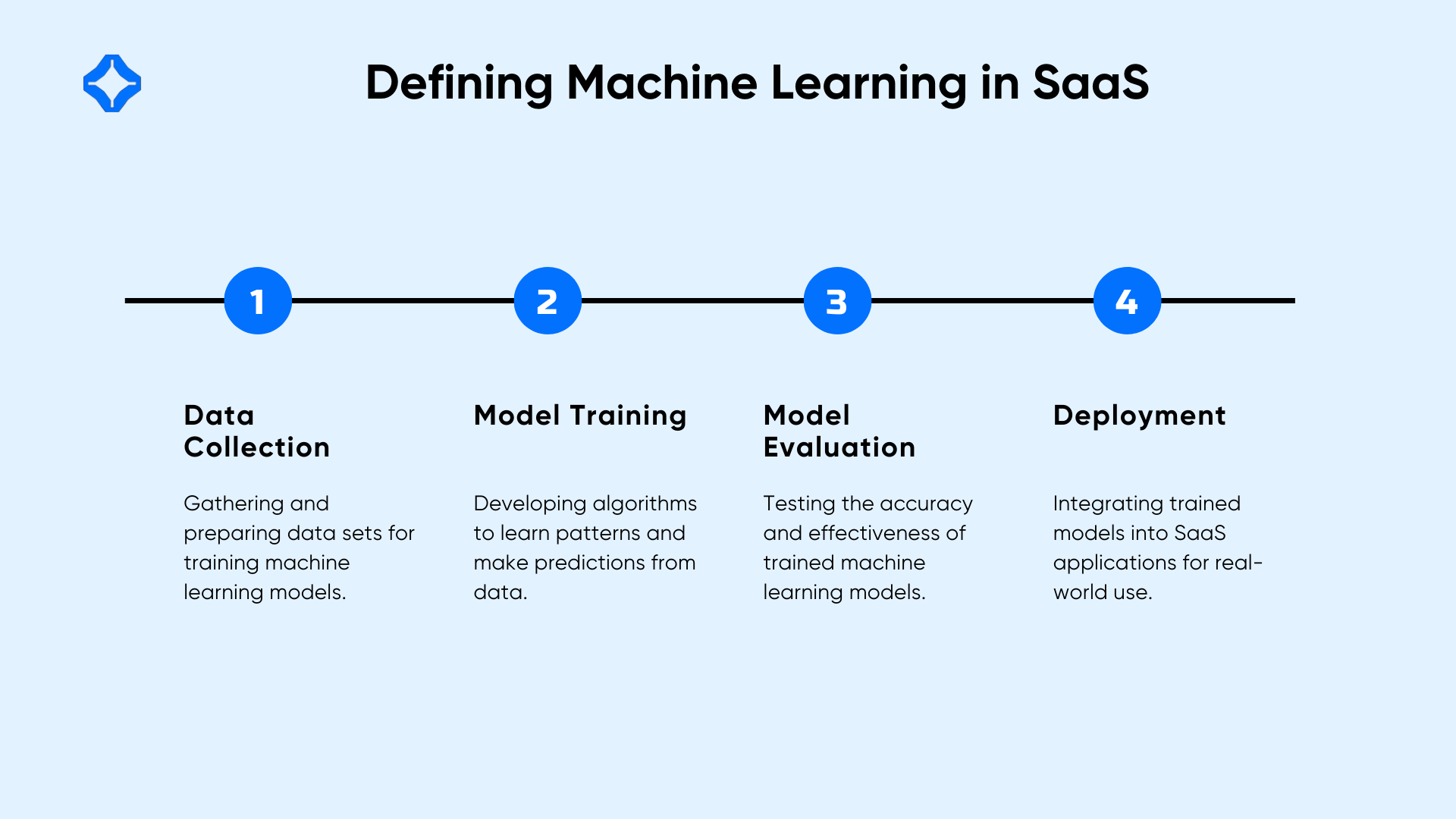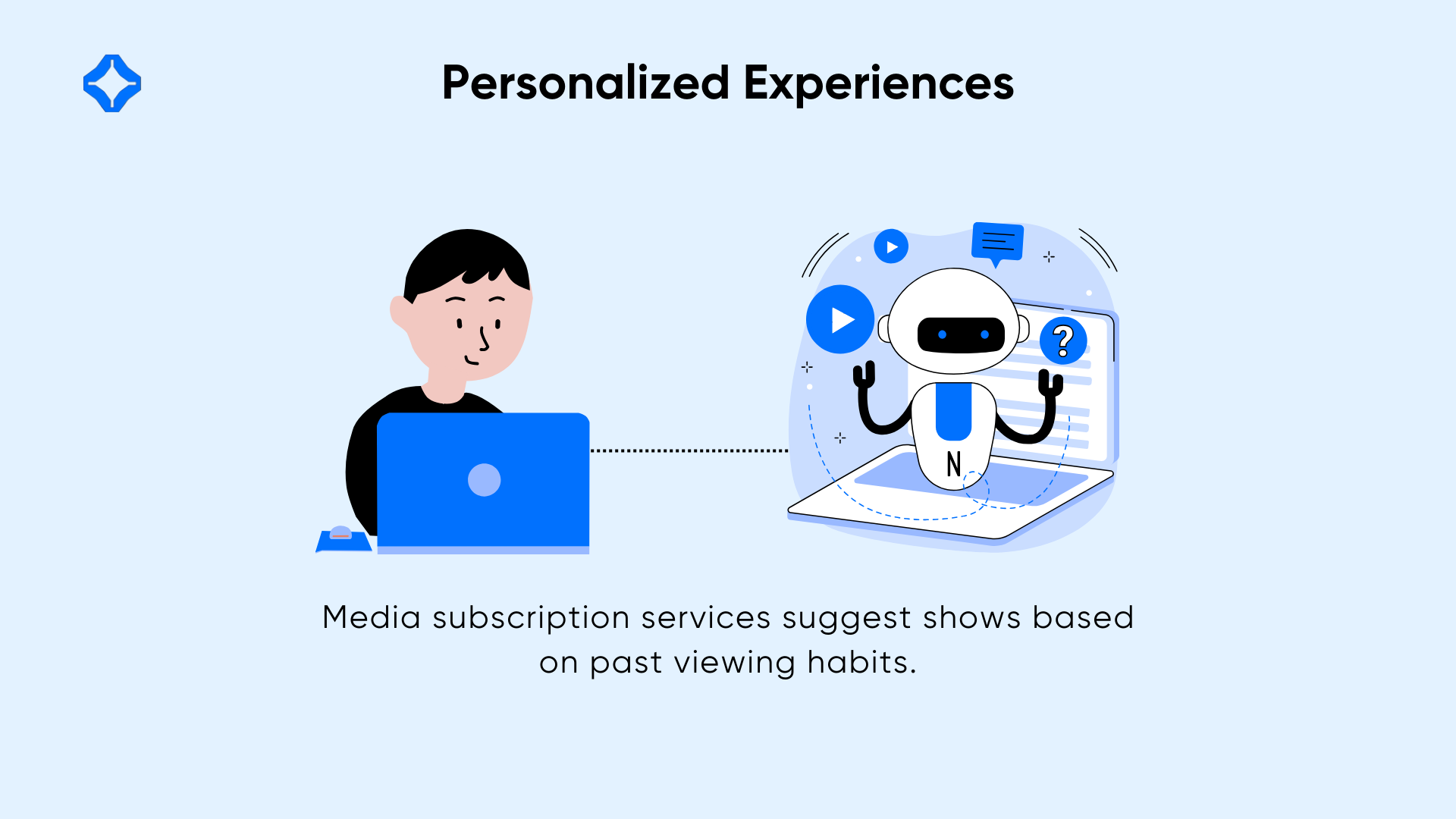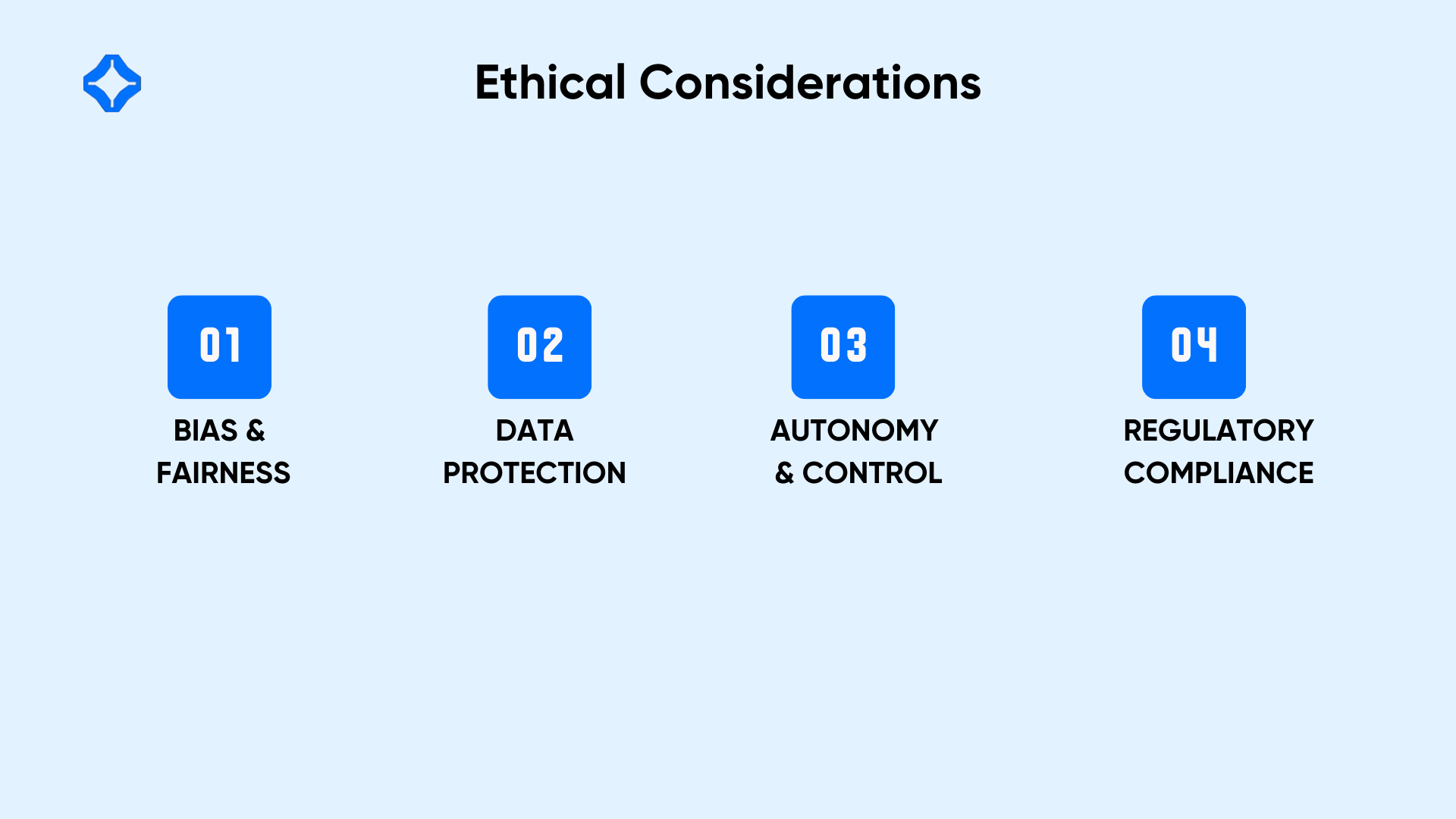SaaS solutions have reshaped how businesses access software. Instead of installing programs on individual machines, organizations can now tap into products through the cloud. This lowers upkeep costs and allows providers to roll out updates without disrupting customers. Machine learning magnifies these advantages by delivering ongoing discoveries that match evolving user demands.
SaaS Providers began seeking insights buried in large datasets as customer needs grew complex. Machine learning meets this need with algorithms that detect hidden patterns, predict behaviors, and enable automated decisions. In SaaS contexts, these capabilities lead to more relevant features, stronger safeguards, and streamlined user experiences. This shift places machine learning at the center of modern SaaS evolution.
Defining Machine Learning in SaaS

Machine learning in SaaS refers to systems that learn from data and refine their output. Rather than following fixed rules, they adapt to incoming information. In SaaS environments, these algorithms process user interactions, operational logs, and external signals to uncover relationships. Insights might improve product accuracy, guide automation, or power real-time alerts.
Many see machine learning as an extension of analytics. But instead of simply visualizing information, machine learning models predict results or categorize items without needing explicit instructions. They continuously update their predictions, making them ideal for platforms that release new features frequently. Providers often embed these models into existing workflows, giving users advanced decision-making tools.
Machine learning also changes how users engage with SaaS. Instead of expecting customers to adjust the software for every scenario, the software adapts automatically. This approach is clear in personalized recommendations or flexible pricing engines. Rather than using a single workflow for all, machine learning modifies the path based on context and real-time data.
Key Areas of Impact
Security and Anomaly Detection
User trust anchors SaaS platforms. Machine learning strengthens that trust by recognizing suspicious patterns. It flags sudden account takeovers or unexpected spikes in network requests. Traditional monitoring systems might miss the subtle signals that machine learning catches. Immediate alerts let security teams respond quickly, reducing potential damage.
Customer Success and Support
Effective onboarding and troubleshooting keep clients happy. Machine learning tools study how users explore features and then suggest the next logical step. This cuts down on the need for manuals or support tickets. AI Chatbots that interpret natural language can operate around the clock, handling basic questions and freeing human agents to tackle complex tasks.
Sales and Marketing Analytics
Sales teams rely on insights about leads and conversion patterns. Machine learning can analyze past deals and scan lead data to highlight promising opportunities. These models guide sales reps to the most profitable tasks. Marketing teams also benefit from refined targeting, sending more relevant messages to specific user segments.
Operational Efficiency
SaaS providers often serve thousands of concurrent users. Predicting surges helps them allocate resources effectively. A model might foresee spikes in traffic and prompt the platform to scale up. This smooths performance, prevents outages, and reduces costs. Traditional forecasting methods can be slow, but machine learning adjusts in near real time.
Driving Personalized Experiences

Personalization remains a core benefit of machine learning. Many apps serve content that is the same for all. A machine learning layer observes past behavior, site visits, or purchase history and then modifies what a user sees. This raises satisfaction because people find what they want faster.
Media subscription services illustrate this concept well. They suggest shows based on past viewing habits. Collaboration apps might propose templates suited to a user’s job role. In B2B scenarios, dashboards can shift based on user permissions, showing performance metrics for managers and budget stats for finance. Through machine learning, SaaS providers make these custom views possible.
A key advantage of personalization is deeper loyalty. Users remain engaged because the app appears to anticipate their needs. That can lead to stronger ties and more opportunities for cross-selling or good reviews. However, gathering data for these models demands ethical safeguards and clear privacy guidelines.
Automating Decision-Making Processes
Machine learning also tackles repetitive decisions that save employees time. A lending system might score loan applicants in seconds by learning from past credit outcomes. This reduces manual checks and speeds up responses. The same idea works for e-commerce returns or claims processing, freeing staff to focus on unusual or critical cases.
For logistics, supply chain optimization algorithms weigh real-time traffic, shipping deadlines, and warehouse capacity to simplify routing decisions. This ongoing optimization adjusts as conditions evolve, reducing delays and costs. Even so, continuous testing is vital. Mistakes in an automated pipeline can create widespread problems.
Many providers adopt a “human in the loop” strategy. The machine learning tool makes a suggestion, but a person reviews final decisions until trust builds. Gradually, the system can assume more control once it proves accurate enough. This reduces risk while capturing the speed benefits of automation.
Challenges and Risks
Data Quality
Models live or die by the quality of their data. Inconsistent inputs or missing records lead to flawed outputs. SaaS teams must create processes to check data integrity, address duplicates, and handle outliers. Without these steps, the insights might steer clients in the wrong direction.
Model Drift
Real-world conditions change. A model trained on older user behavior may stop reflecting current needs. This drift undermines predictions. Regular retraining, testing, and version control help keep algorithms relevant. If the model’s performance drops, teams investigate and retrain it with fresh data.
Privacy Concerns
Machine learning relies on large datasets. If the data includes personal details, SaaS providers must guard that information. Regulations such as GDPR demand secure storage and transparent user consent. Vendors that ignore privacy rules risk heavy fines and user backlash. Data encryption and clear anonymization are crucial.
Integrating Machine Learning into SaaS
Teams have a few routes to add machine learning. Some turn to off-the-shelf APIs from cloud platforms for tasks like sentiment analysis or computer vision. Others build custom models that suit their niche. The second option needs more expertise but offers greater control.
A crucial early step is project scoping. Overambitious efforts may confuse users with overly complex functionality. Many providers start with a simple predictive feature, such as churn forecasting or dynamic pricing. If users see results, the project often expands.
Deployment also varies. Some embed the model directly in their backend services. Others containerize it and scale on demand. Real-time inference requires high availability, while scheduled jobs can run in batches. Integration with existing databases and user-facing portals is vital for a seamless experience.
Ongoing Iteration and Improvement
Machine learning is not a one-time project. Conditions shift, new data emerges, and user behavior evolves. Models need periodic refreshes. Some systems run continuous training pipelines, while others do so at set intervals.
Regular performance checks track key metrics like accuracy or recall. Developers examine data changes, user feedback, or potential anomalies if results dip. They correct any issues before the drop in quality erodes trust. Backups of older versions allow rollbacks if a newly trained model acts unpredictably.
Feedback from users fuels refinements. As they see beneficial outcomes, they might share more data or ask for new capabilities. That ongoing loop helps the product grow smarter, creating a virtuous cycle of improvement. Successful SaaS teams encourage this relationship between customers, data, and model upgrades.
Ethical and Regulatory Considerations

Skewed training data can bring biases in machine learning. A hiring platform might wrongly screen out candidates from certain backgrounds if the source data reflects past hiring inequalities. SaaS developers must audit models to find these biases and take steps to remove them.
Compliance is also key in regulated sectors like finance and healthcare. Automated decisions on loans or patient care must follow strict guidelines. Developers must be ready to show why a model arrived at a specific outcome. Tools like LIME or SHAP help generate partial explanations of a model’s reasoning, easing concerns about black-box AI.
Users want transparency and fairness. They will lose faith if they believe the system makes random or discriminatory judgments. Balancing the complexity of machine learning with the need for clarity is an ongoing challenge. Regular reviews of model outputs help prove alignment with ethical and legal standards.
Future of ML in SaaS
Machine learning stands to become a routine feature in most SaaS platforms. Hardware advances and new frameworks will allow more sophisticated models. Some providers will embed natural language understanding, speech recognition, or image analysis throughout user workflows, blurring the line between standard and AI-driven features.
Edge computing might also grow in importance. Certain data processing tasks could happen on local devices rather than in the cloud. That approach can reduce latency and keep sensitive details on-site. SaaS vendors may adopt hybrid setups, sending some data to the cloud but doing immediate inferences at the edge. This suits industries with a low tolerance for delays or with high privacy demands.
Customer expectations will keep climbing. People want software that adjusts to their context, solves routine problems, and frees them for strategic work. SaaS providers that embrace machine learning early can outpace competitors, attract new clients, and deliver deeper value. Staying informed about user needs, regulatory changes, and best practices ensures they remain adaptable.
Conclusion
Machine learning enriches SaaS offerings by converting raw data into actionable insights. Instead of placing the full burden on users to find hidden patterns, the software highlights trends, streamlines decisions, and grows more refined with time. These advantages appear in personalized dashboards, secure anomaly detection, automated workflows, and predictive analytics.
Success depends on data quality, ethical design, and continuous model improvements. Transparency about how decisions are made fosters user trust. As machine learning evolves, it will weave further into SaaS, pushing the boundaries of what standard products can do. Thoughtful planning, ongoing iteration, and careful handling of user data can help companies make the most of this transformative technology.
FAQs
Systems generally rely on user logs, operational events, and contextual factors. Quality and completeness matter more than sheer volume. Clean, well-labeled data increases model accuracy.
Some providers offer no-code or low-code solutions that automate many tasks. However, advanced or highly customized use cases benefit from a team with data science skills and domain knowledge.
They can review model outputs regularly, search for biases, and adjust training datasets. Explaining the underlying logic to users and stakeholders also helps maintain trust in the system.